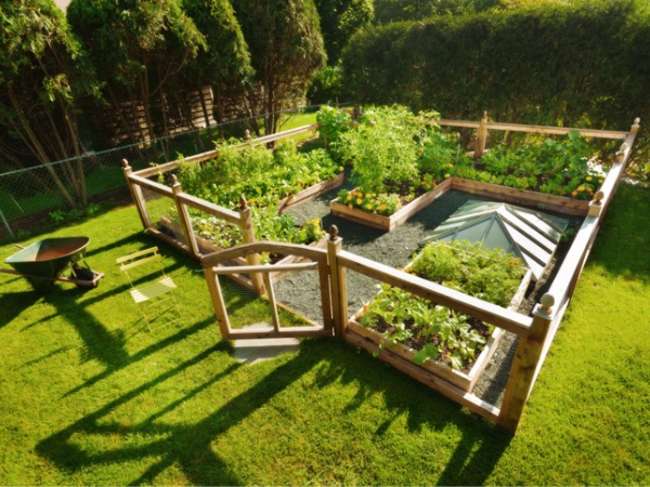We may earn revenue from the products available on this page and participate in affiliate programs. Learn More ›
Flattering and Functional
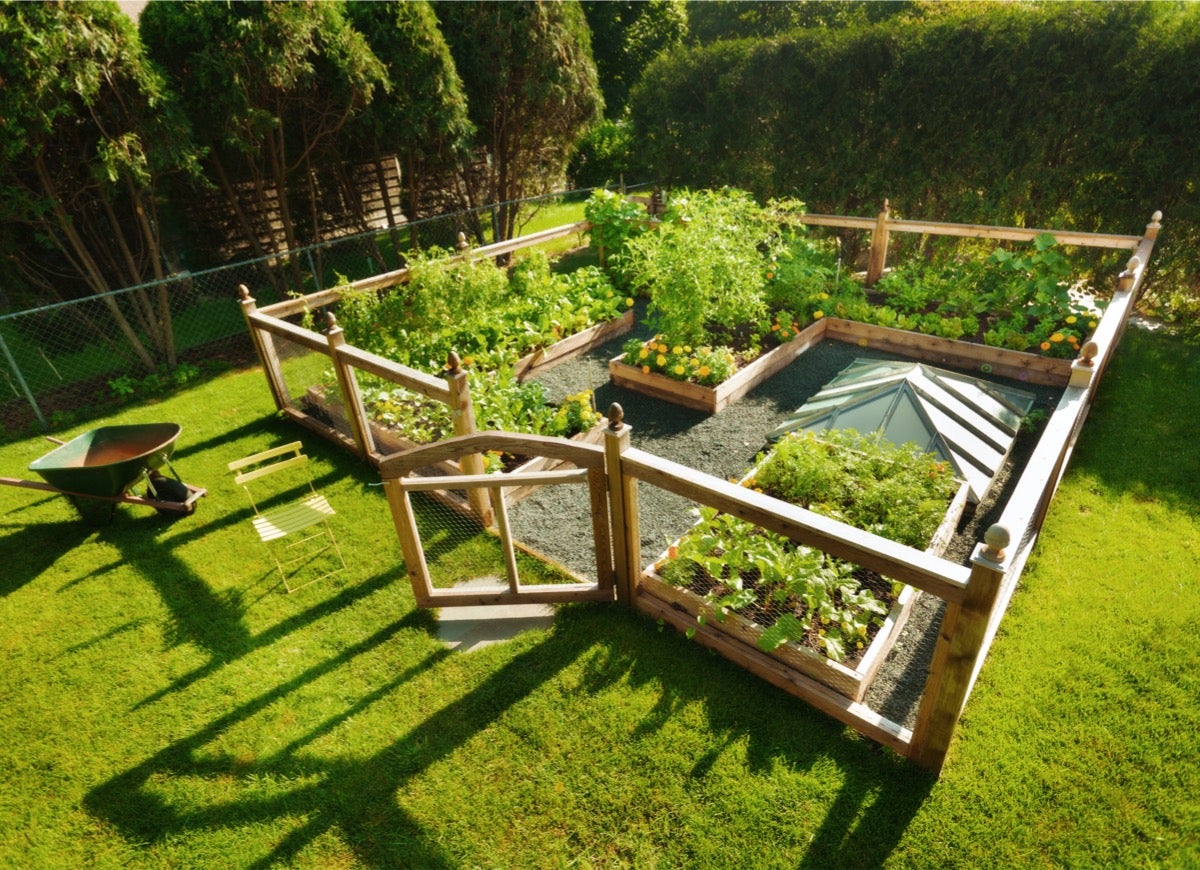
People often construct fences to provide privacy from neighbors or protection from wildlife intruders. Many of the garden fence ideas pictured here might be too low or penetrable to faze peepers or grazers. But they can mark the edges of flowerbeds or borders and provide a connecting element between them.
Some also can help hold mulch in place and keep your plants out of the path of the lawnmower. Most of all, garden fences can add to a landscape’s appearance and flow. Make sure your fence’s style and materials complement your home and garden lest they end up looking unfitting rather than unifying.
Wicker
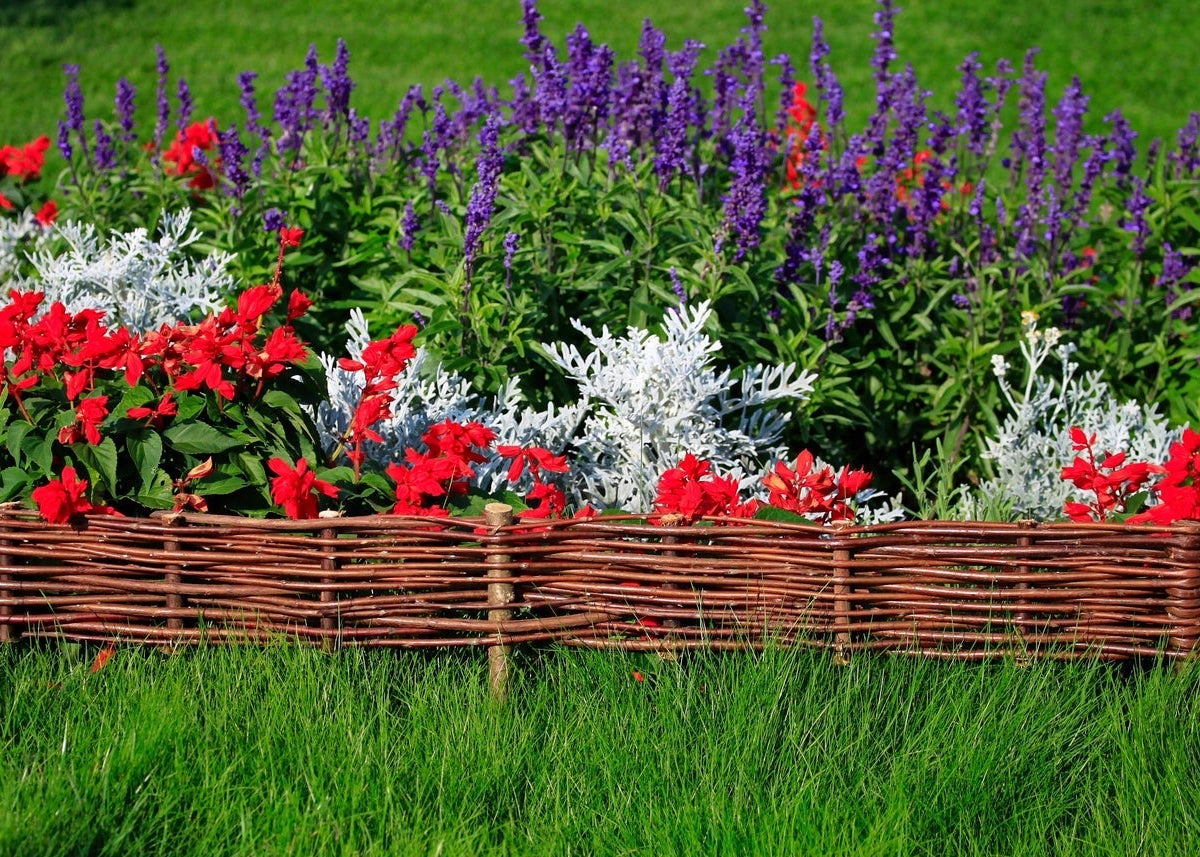
Fence materials vary, and most wicker fences like this one (available on Etsy) are constructed of bent willow. This rustic appearance is highly appropriate for informal cottage garden beds or borders, where plants such as hollyhocks, foxgloves, peonies, bellflowers, and sweet Williams tumble all over each other. The flowers also can tumble over the withes of the wicker, which keeps them from falling into the path or onto the lawn. Although such profusion would be out of place with simplistic modern homes, it pairs well with more traditional styles.
Metal
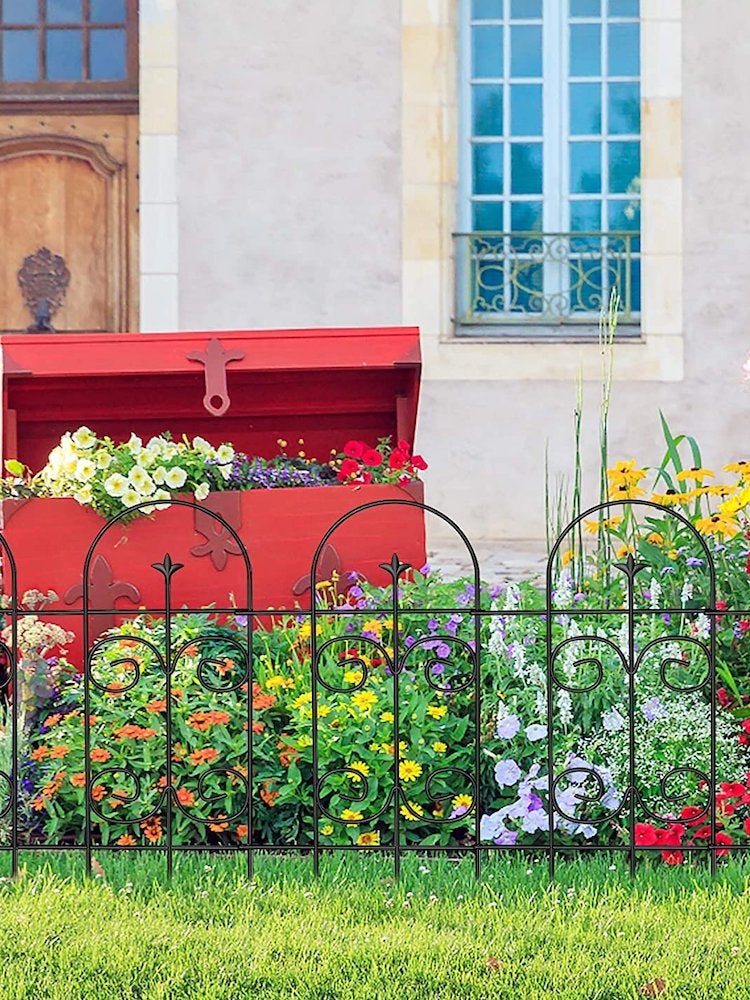
Reminiscent of Mediterranean balconies or of the wrought-iron fences once used to secure the perimeter of estates, elegant decorative metal fencing (available on Wayfair) goes especially well with stucco houses of Moorish or Spanish design. Since those often are popular in warm, dry climates, plants to accompany them might include the traditional balcony pelargoniums (annual geraniums) and dwarf citrus trees, as well as cacti and succulents, climbing roses, and jasmines.
Wood Edging
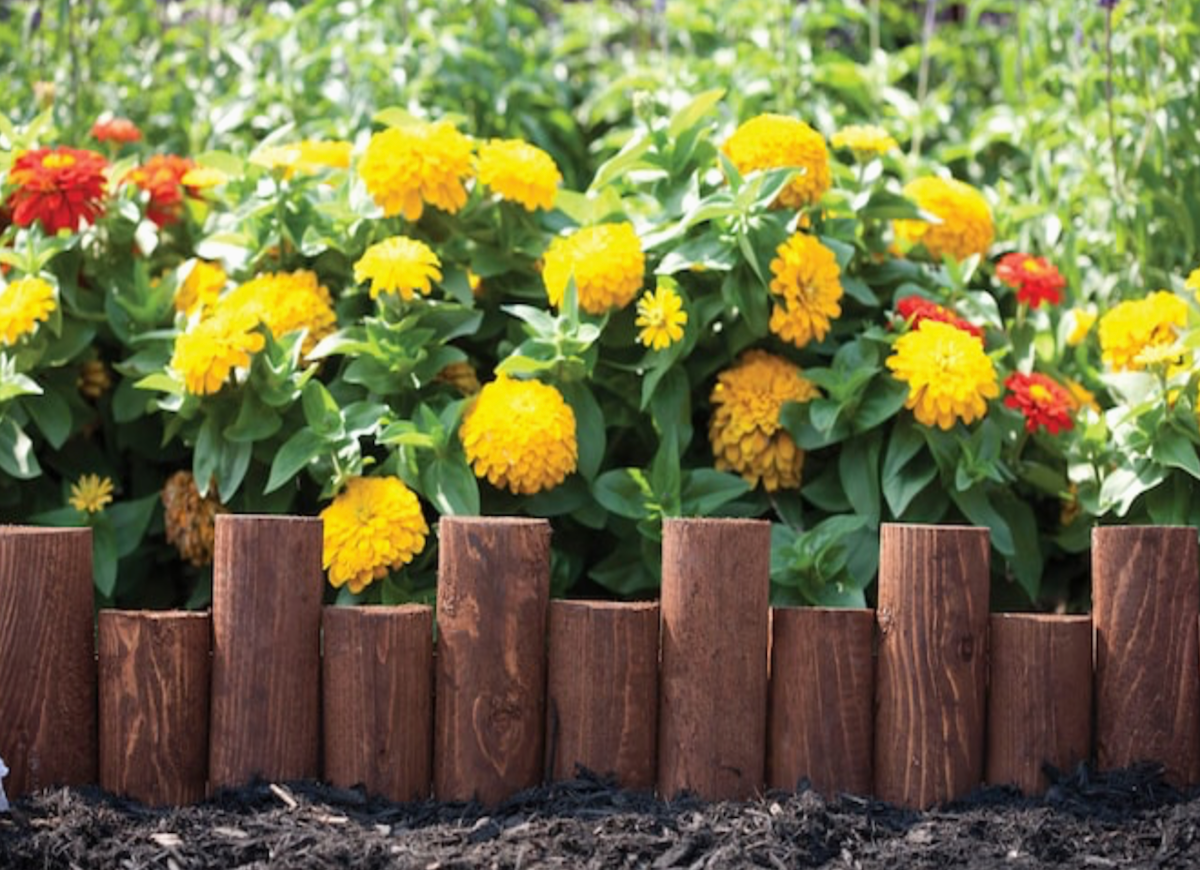
Half-log edging (available at Lowe’s) gives off a country vibe reminiscent of rail fences and corrals. Therefore, it pairs well with wildflowers and bucolic blooms such as black-eyed Susans, daisies, coneflowers, zinnias, and sunflowers. Add the attractive, low fence around those gardens planted by summer cottages, cabins, or farmhouses. If you like the idea of wood, you also can use money-saving old pallets to construct garden beds and barriers.
Related: How To: Install Landscape Edging to Boost Your Curb Appeal
White Vinyl
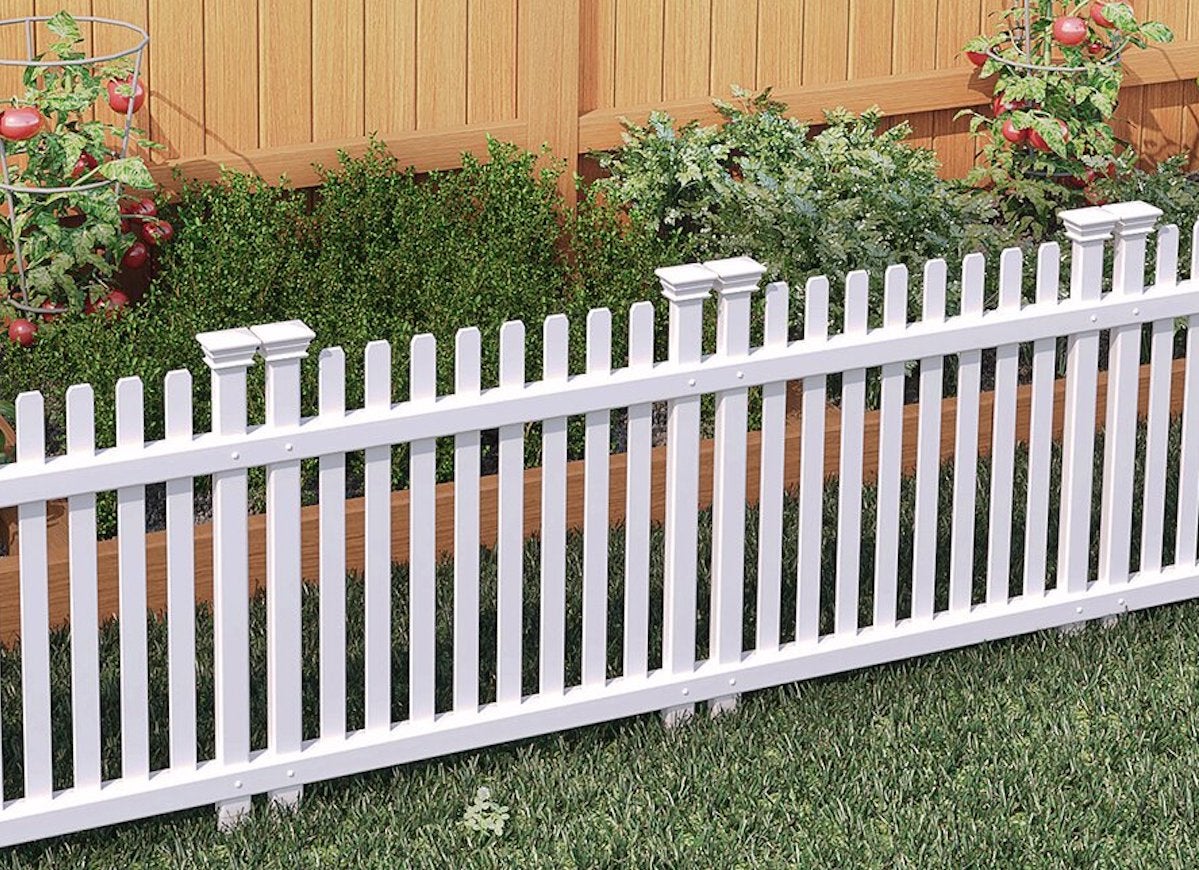
If you subscribe to the American dream of a white picket fence, but don’t like the work involved with maintaining a wooden one, you might want to opt for a vinyl garden fence instead (available on Wayfair). Pickets go well with Cape Cod or other traditional style homes. As for what to plant in front of them, try delphiniums, foxgloves, and hollyhocks secured to those palings, fronted by low growers such as sweet alyssum and lobelia, perhaps all capped off by a rose clambering over the crosspiece.
Climbing Plants
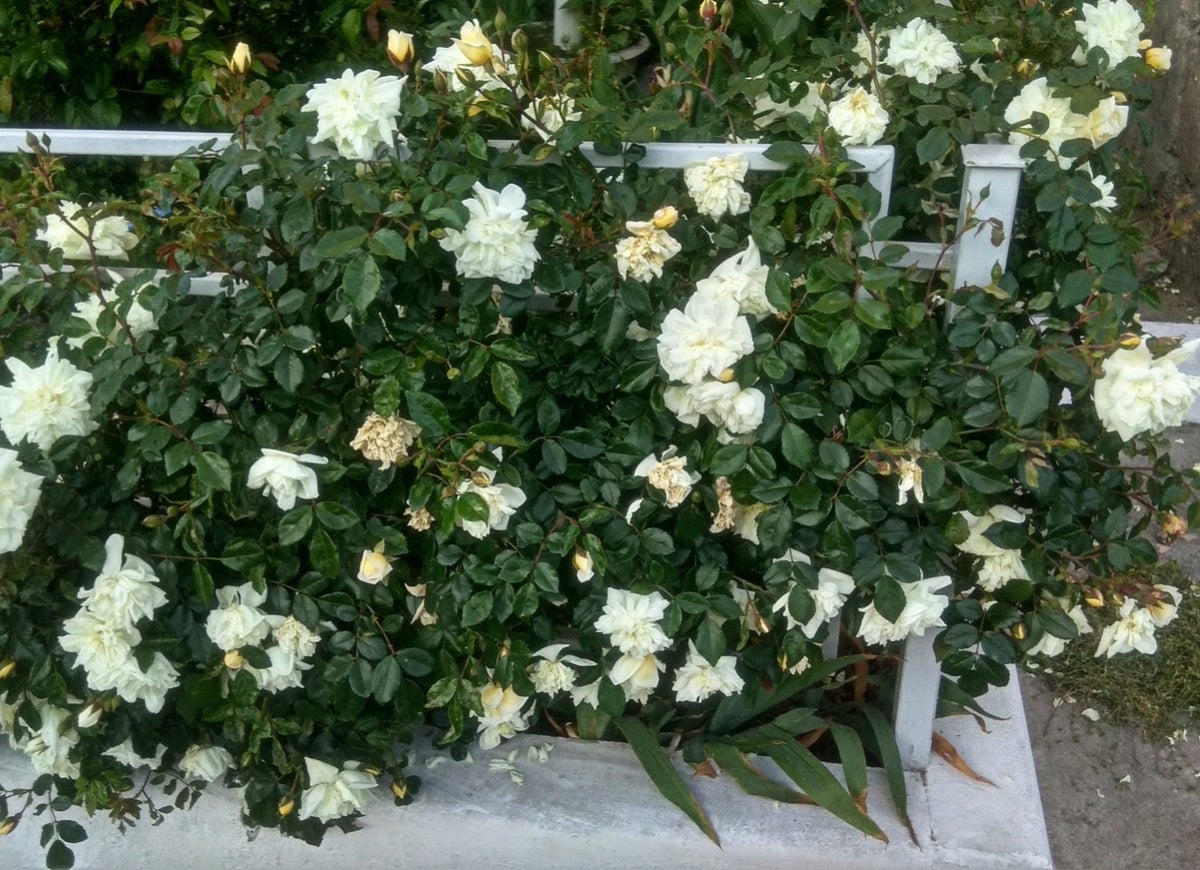
Although the design and composition of this fence is hard to make out behind its veil of roses, it illustrates an excellent garden fence idea—horizontal bars that act as a kind of “laid-on-its-side” trellis. On it, you can train climbing or vining plants such as roses, clematis, honeysuckle, and others to grow laterally rather than upward, perhaps almost concealing the original fence but making a living one of their own.
Resin Edging
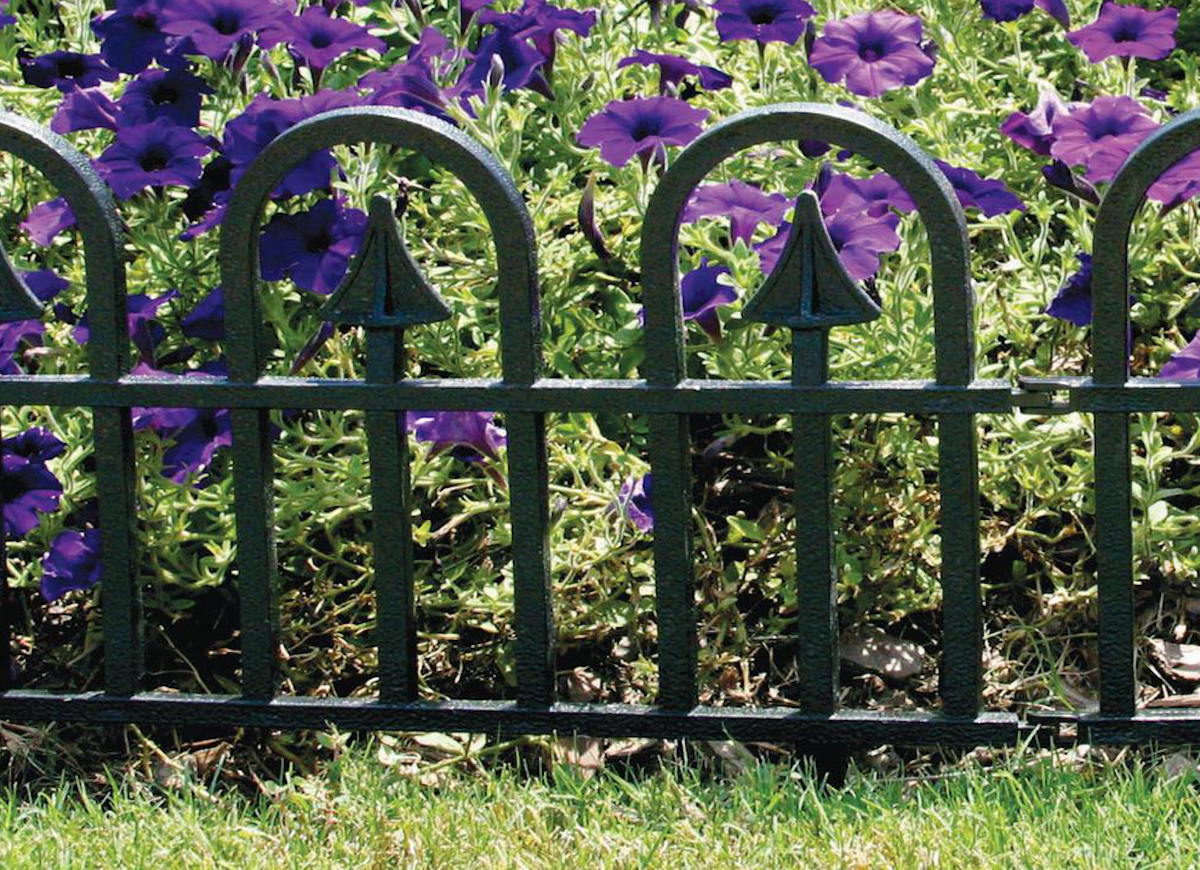
If you like the classic look of the wrought iron mentioned previously, but would prefer not to have to watch for rust—or if your lot or garden bed is so small that a larger fence would look ridiculous—you might want to try a low border edging such as this one made from black resin instead (available at The Home Depot). However, you’ll always want to check reviews, since some plastics can be on the flimsy side and might not hold up as long as the iron does.
Vintage
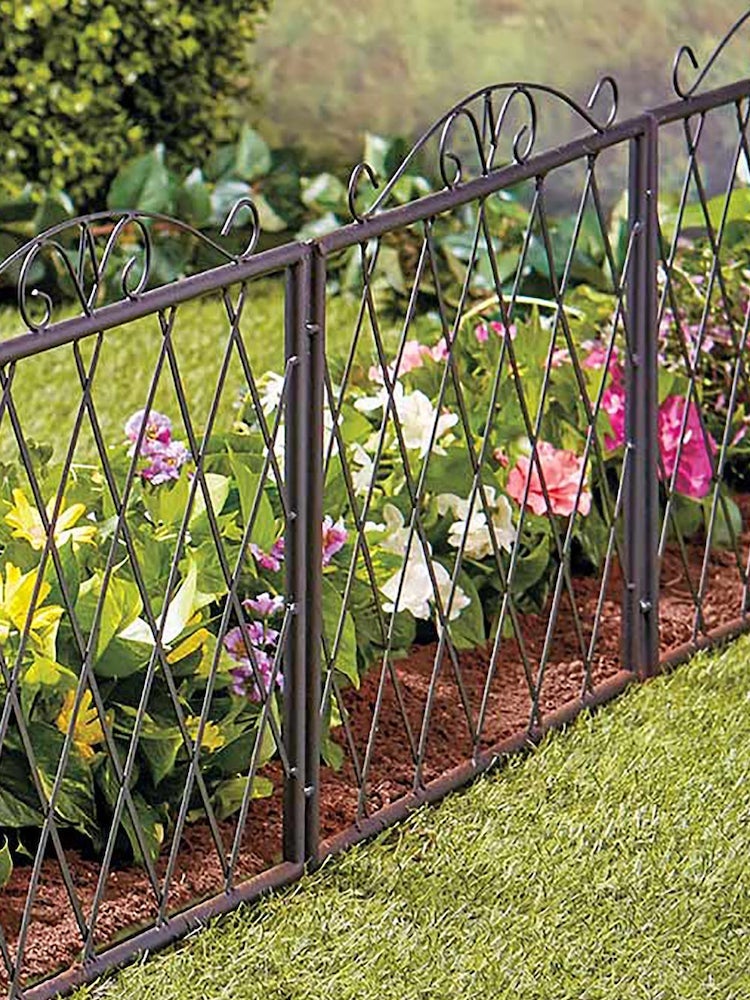
This metal fence (available on Etsy) offers the advantage of a trellis-like pattern beneath its decorative scrolling. Theoretically, you could use it to tie up tall and climbing plants such as hollyhocks or morning glories. When purchasing a metal garden fence, however, always inquire about the composition of that metal, since alloys that contain iron are likely to rust if they have damp plants leaning against them.
Related: How To Fix a Leaning Fence
Subtle Curves
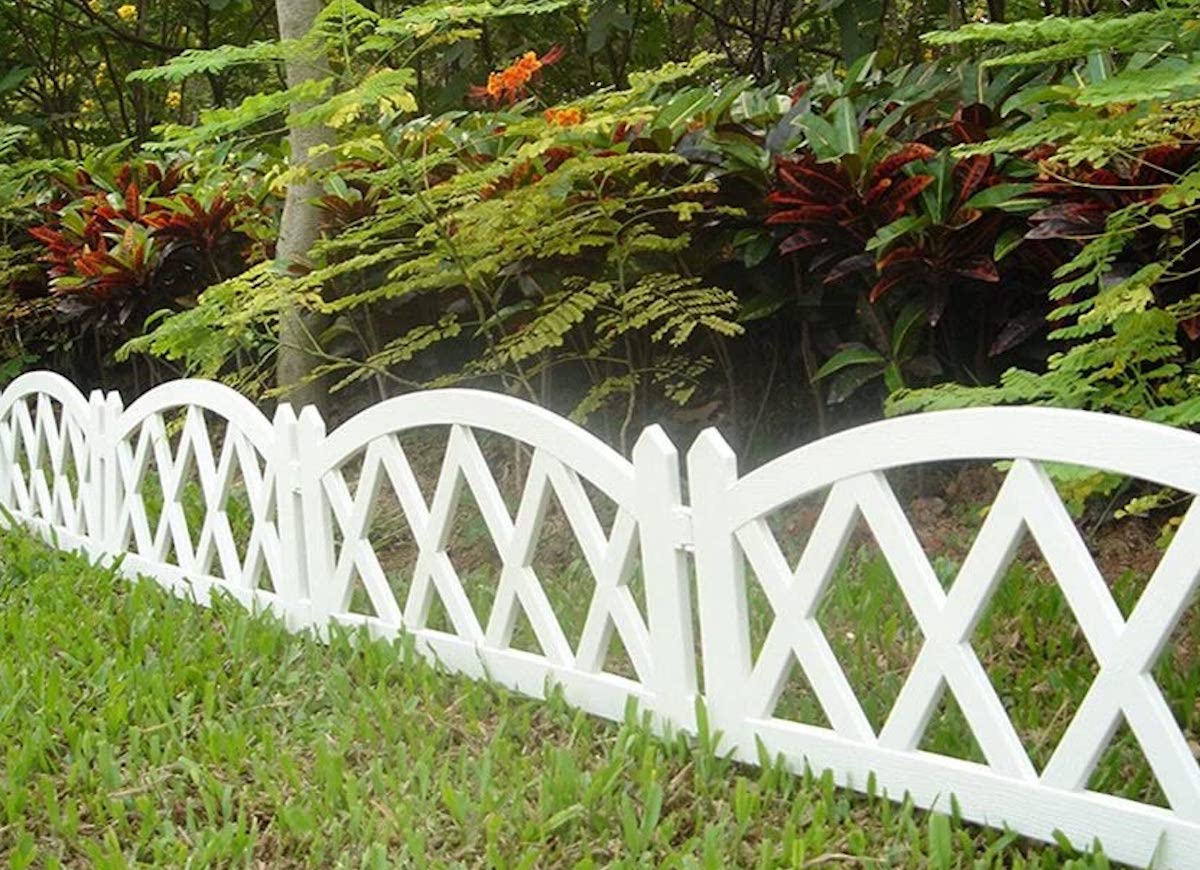
Picket edging made of plastics such as propene polymer can work in some settings, provided that the plastic really is durable enough to stand up to installation and the weather. You can get the look of a wooden fence design with a low-maintenance material. A low type such as this (available on Amazon) could enclose low-growing annuals such as petunias and marigolds in the sun or begonias and impatiens in the shade.
Rustic Rope
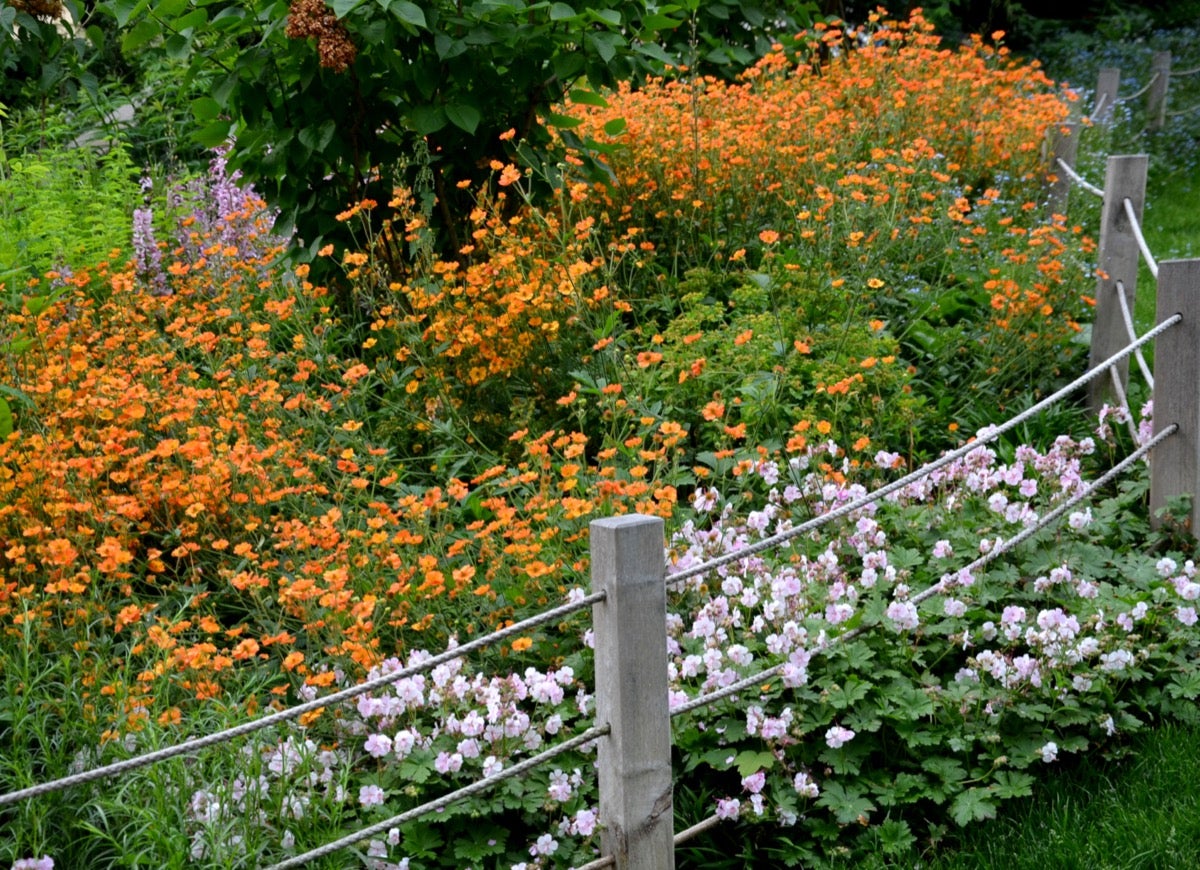
With a look somewhat similar to that of the cable type of guardrails, this fence’s style depends quite a bit on the type of materials from which it is constructed. Weathered wood and rope, for example, could suit it to casual rural settings while metal stakes accompanied by cables probably would make it more appropriate for a modern industrial type of architecture. In the latter case, mass plantings of the same shrub or flower would fit the simplistic style better than many different varieties.
Living
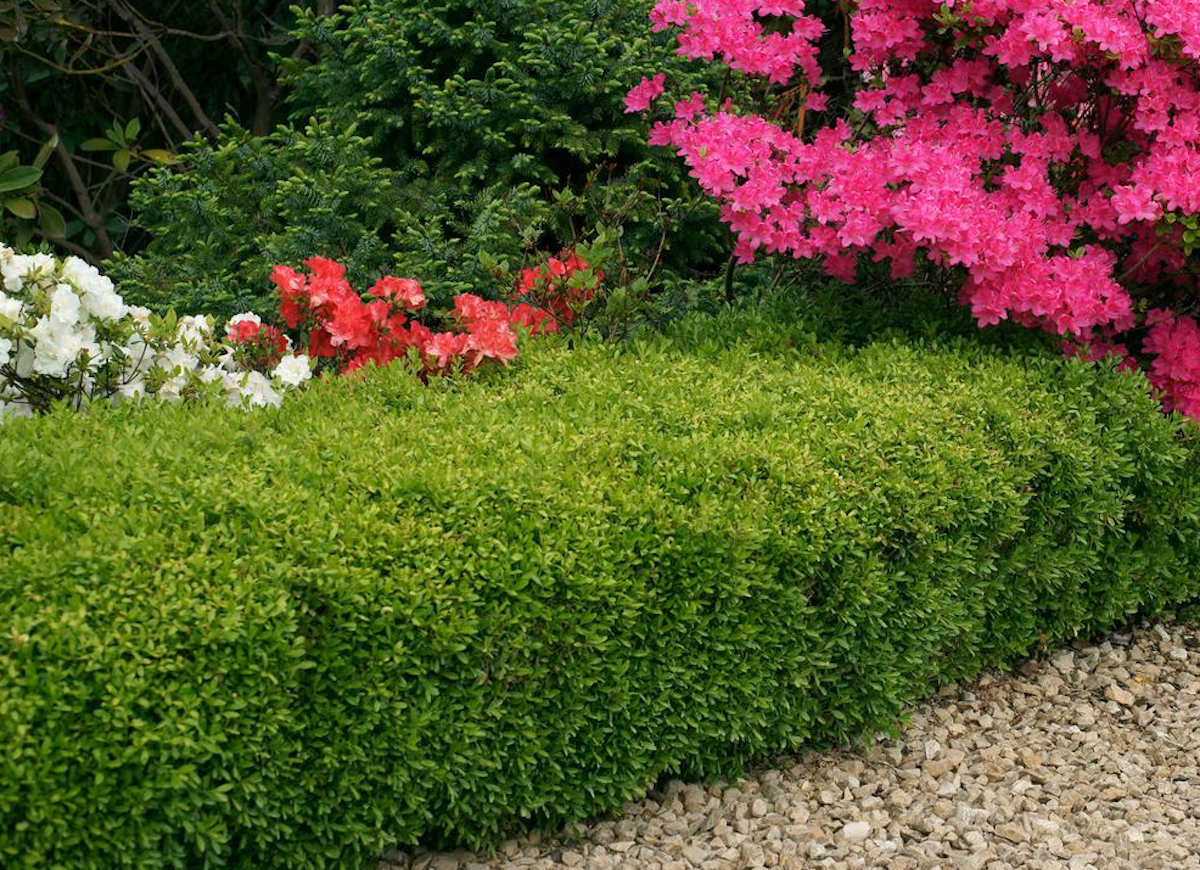
Neatly sheared living fences, such as the boxwood hedges shown here (available at The Home Depot), are highly popular in the formal gardens associated with mansions or British manors. In formal gardens, simplicity is key, and masses of the same type of plant rather than a mix of many can give a simple but formal feel. Since tall hedges tend to hide all but the stateliest flowers that stand behind them, you may want to make yours short or keep your beds in front of rather than behind those hedges. Or use this hedge as a living fence to separate a front yard or border the sidewalk or driveway.
Chew-Proof
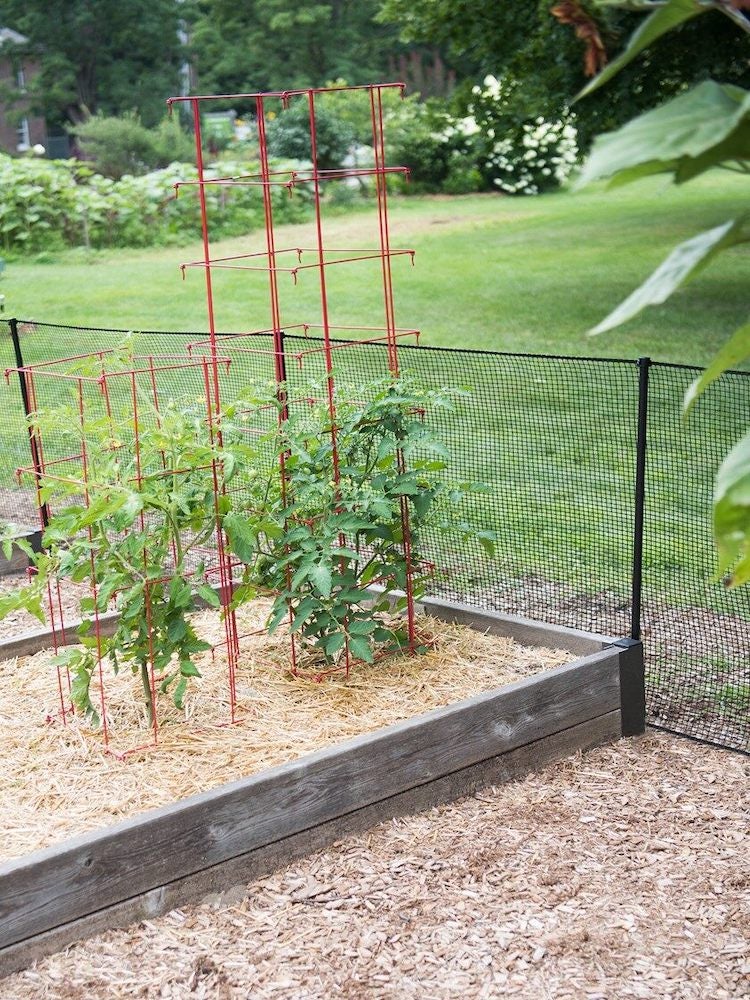
Some garden fences offer more function than aesthetics. Netting is strictly utilitarian and designed to keep wild animals—especially deer—out of your vegetable garden (available on Gardener’s Supply Company). Keep in mind that, to be successful, that netting will need to stand at least 6 feet tall for deer and probably won’t be strong enough to keep rabbits and groundhogs from chewing through it. Although desperate gardeners sometimes use it for flower beds, it isn’t especially pretty, but doesn’t mar the landscape as much as chicken wire can.
Related: How To: Keep Deer Out of Your Garden

Our Best Advice for Beginner Gardeners
We’ll help you set up your first garden—whether that’s a few pots on your patio, a raised bed, or an in-ground plot out back—and select the right plants for your soil and region.

